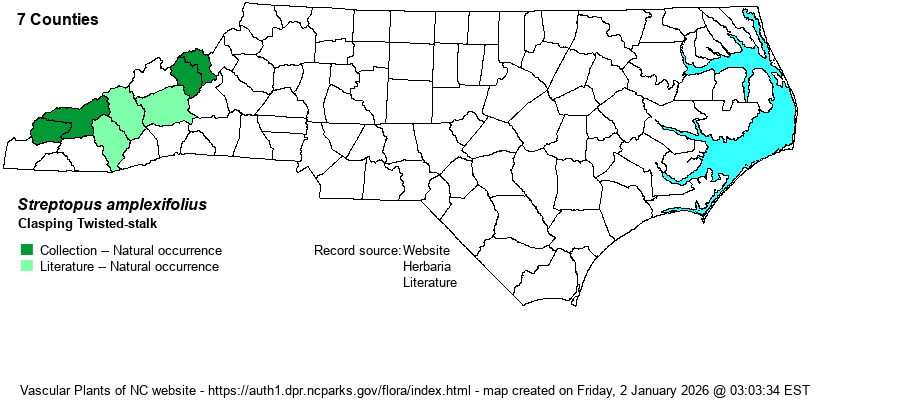| Author | (L.) de Candolle | |
| Distribution | Limited to the higher central and southern Mountains. Despite this being a Northern species, it is strikingly absent in the northern Mountains, though perhaps only Grandfather Mountain would have the requisite habitats and elevation for it to occur in the northern Mountains.
The species is circumboreal, growing also in parts of Europe and Asia. Most of the range in the US is in the Western states; in the East it ranges over most of New England, and sparingly south to northern VA, with a strongly disjunct population in eastern TN and western NC. | |
| Abundance | Very rare, with most populations located in the Black Mountains and the Roan Mountain areas. A few others are in the Great Smokies and in the Great Balsams. This is a Significantly Rare species. | |
| Habitat | This is a species of high elevations, mainly over 5,000 feet. It grows in cool to cold damp places, mostly at seepages within forests of various composition. |
| Phenology | Blooms from late April to early June. Fruits from late July into September. | |
| Identification | This is a lily with a few-branched stem that reaches a height of about 18-20 inches. The scattered alternate leaves are elliptical and grow to about 3-4 inches long, with grooved parallel veins. The upper branches are quite zigzag, and a small whitish to greenish-white flower dangles below each of the leaf nodes. The flowers are bell-shaped, facing downward, each about 1/3-inch long. The similar S. lanceolatus has two major differences: its flowers are pink, and its leaf margins are strongly ciliate (hairy). S. amplexifolius has leaf margins that are generally smooth or at least barely hairy, and also its leaves are strongly clasping at the base, as opposed to clasping but not strongly so. In your wanderings at high elevations in the mountains, you are not likely to run into either species of Streptopus very often, and most of the encounters will be with S. lanceolatus. | |
| Taxonomic Comments | Not surprisingly, owing to its very wide range, the species has numerous varieties. The one in NC is var. amplexifolius. Most references do not list varieties or subspecies for it.
| |
| Other Common Name(s) | Claspleaf Twisted-stalk, White Twisted-stalk, Watermelon-berry (an odd name!) | |
| State Rank | S1 | |
| Global Rank | G5 | |
| State Status | [SR-P] | |
| US Status | | |
| USACE-agcp | | |
| USACE-emp | FAC link |

